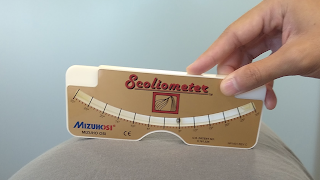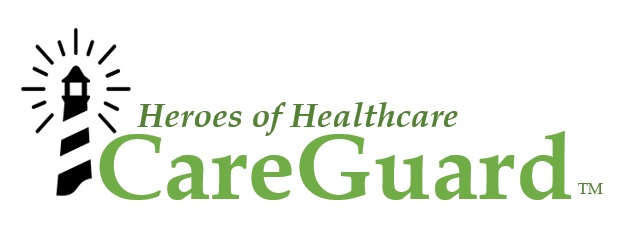
This is a guest post from Colleen Skeete and Jonathan Revoir, scoliosis patients and CareGuard Institute interns.
Welcome to Scoliosis Awareness Month! Our spine is the core of our body that holds us up for our lifetime, and we can take it for granted. Early screening in children and life-long monitoring in adults is important to take care of your spine, so that you can maintain a good quality of life.
It is easy to screen yourself, your children, or your friends from home by using a scoliometer or a bubble-level app on your smart phone to measure the degree of rotation. Simply have the person bend over, and measure the two greatest areas of rotation. If the angle of trunk rotation (ATR) is greater than six degrees, it is a good idea to get physician evaluation, and a full-length x-ray taken to see if scoliosis is present. If scoliosis is present, conservative methods such as Schroth therapy, a physical therapy technique focusing on elongating the spine, and 3D-CADCAM (Rigo-Chenau) bracing can help to stop and/or reverse the scoliosis. This may prevent later quality of life issues, and life-long curve progression. and possibly prevent the need for invasive surgical treatment. Weinstein found that curves under 30 degrees tended not to progress during adulthood — so we want to FIND scoliosis under 30 degrees, and try to “KEEP IT IN THE GREEN ZONE” – under 30 degrees if possible, with conservative therapies.


Life-long monitoring of scoliosis, even after adolescent years, is just as important as early screening. Natural progression history research shows 68% of patients with adolescent idiopathic scoliosis (AIS) will experience curve progression as adults, as shown in the figure below. Curves under 30 degrees, shown in green, tend not to progress [Weinstein et al 1981, 1983 — see figure below].

You can also find more information at National Scoliosis Foundation and the Scoliosis Research Society — Please support both of these important non-profits!!!!
The SRS website allows you to “Find a Scoliosis Specialist” near you.
CareGuard Institute Summer Interns with Dr Lloyd Hey
http://www.CareGuard.org
Hey Clinic for Scoliosis and Spine Care
http://www.heyclinic.com



